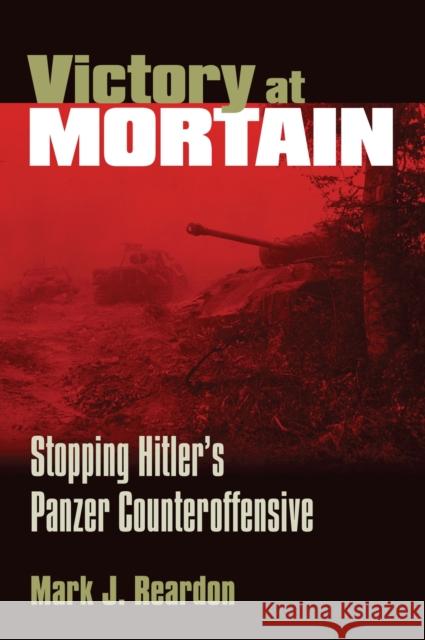Victory at Mortain: Stopping Hitler's Panzer Counteroffensive » książka
topmenu
Victory at Mortain: Stopping Hitler's Panzer Counteroffensive
ISBN-13: 9780700612956 / Angielski / Miękka / 2002 / 368 str.
Victory at Mortain: Stopping Hitler's Panzer Counteroffensive
ISBN-13: 9780700612956 / Angielski / Miękka / 2002 / 368 str.
cena 146,29
(netto: 139,32 VAT: 5%)
Najniższa cena z 30 dni: 144,78
(netto: 139,32 VAT: 5%)
Najniższa cena z 30 dni: 144,78
Termin realizacji zamówienia:
ok. 30 dni roboczych
Dostawa w 2026 r.
ok. 30 dni roboczych
Dostawa w 2026 r.
Darmowa dostawa!
A powerful German counterattack in Normandy in August 1944 might have been one of the Wehrmacht's great shining moments in the Second World War. The odds were certainly in their favor. Determined to drive the Allies back to the English Channel, elements of four combat-hardened panzer divisions faced off against a single American infantry division near the town of Mortain. Instead, the Americans held their ground, enabling the Allied armies to secure the invasion and ultimately liberate France.
In a vivid recreation of this pivotal battle--less celebrated than the encounter at the Falaise Pocket but just as decisive--Mark Reardon tells how the 30th Infantry Division held off the German panzer juggernaut, which was designed to drive a wedge between Allied forces. In recounting this showdown, he offers a new perspective on the German defeat in Normandy and a convincing counterpoint to the conventional view of most military analysts that Germany lost the war as a result of Allied materiel superiority or Hitler's strategic meddling. Through vigorous prose laced with compelling anecdotes, Reardon reconstructs the battle from both sides of the firing line to explain why it evolved and ended as it did. He reveals how professional rivalries and lack of accurate battlefield information hampered the efforts of German generals to execute a successful counteroffensive. He also tells how the U.S. Army profited from the bitter lessons of hedgerow fighting to gain superiority in ground maneuver, fire support, and the use of airpower, logistics, communications, and reconnaissance in the face of more experienced and better armed opponents. Reardon's riveting tale reveals that Americans GIs could fight as well as their more vaunted opponent, which gave the U.S. Army the confidence it needed to take the war into the enemy's homeland. Equally important, their victory prevented the Germans from retaking strategic points that would have kept the war bottled up in Normandy. Drawing not only on exhaustive research in Anglo-American and German archives but also on firsthand accounts by more than two hundred American soldiers, Reardon's detailed reconstruction fills an important gap in the history of World War II combat that has existed for more than half a century.










